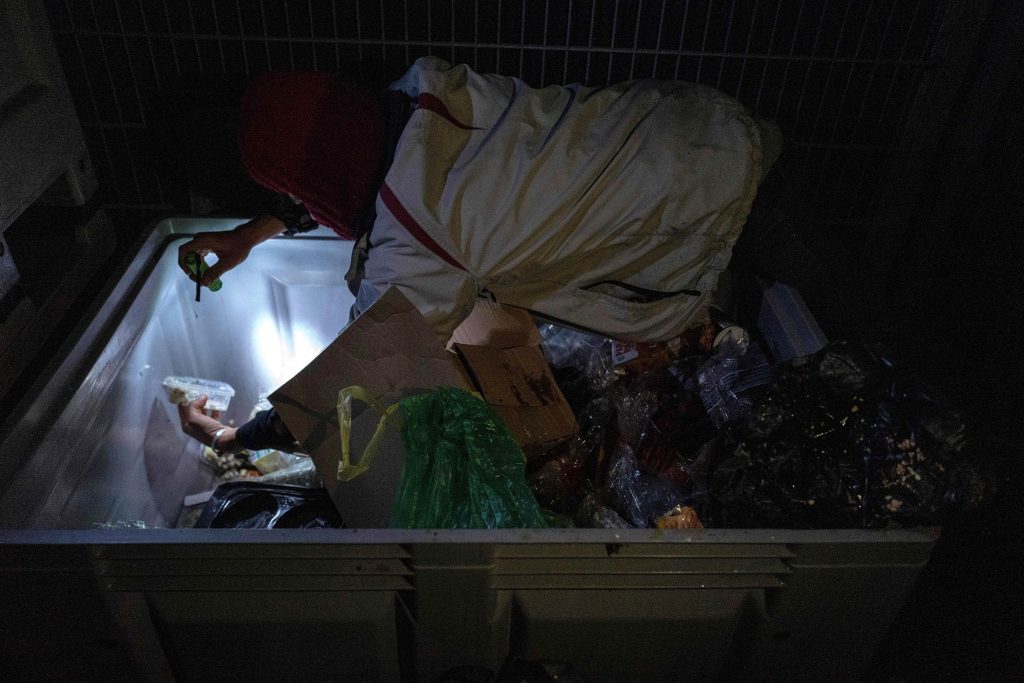The amount of uneaten food produced in the US is climbing, generating significant waste and greenhouse gas emissions, according to new data from ReFED, a national nonprofit. The US produced 91 million tons of surplus food in 2021, a 4.8% increase over 2016. Uneaten food represented about 38% of the total food supply in 2021, valued at roughly $444 billion, according to the organisation. On a per-person basis, this equates to about 548 pounds of extra food, a 1.9% increase since 2016.
In 2021, the latest year for which ReFED’s food waste data is available, 33.8 million people lived in food-insecure households in the US, according to the US Department of Agriculture, including 5 million children. Still, less than 2% of the excess food was donated, ReFED reported. While 18% was composted and nearly 9% recycled into animal feed, about 36% of the surplus food went to landfills.
Households are by far the largest contributor to America’s food waste problem, responsible for nearly half of the total surplus. Produce farms accounted for 17% of the total, manufacturing was responsible for nearly 15%, foodservice about 14% and retail about 6%.
“We are not making anywhere near the progress we need to be to reach the 2030 goal,” said Dana Gunders, executive director of ReFED. The organization aims to reduce food waste by half by 2030 compared to 2016 levels, in line with goals set by the United Nations and the US.
In addition to exacerbating food insecurity, food waste is a major emissions culprit, and by some estimates generates about 8% of all human-caused greenhouse gases. ReFED estimates that the 2021 surplus accounted for 372 million metric tons of carbon dioxide equivalents, or about 6% of total US emissions.
Despite the dire numbers, the newest data does mark an improvement in measurement for a waste stream that is notoriously difficult to track. ReFED’s new model updates earlier years’ numbers and makes use of reported data from grocery stores to estimate retail waste. (The organization previously used two older datasets, relying on information from 2008 and 2012 — one from the USDA and one from an industry report.) The updated data shows retail waste is about half of previous estimates. “There’s hope that we’re making more progress than it seems,” Gunders said.
But the very nature of food waste, which is usually tossed into one of many piles of unmeasured garbage, means that estimates are needed to make up for significant gaps in data. “We’re not separating, we’re not measuring, we’re throwing it out in different places,” Gunders said. Even figuring out total food produced is difficult.
ReFED’s latest numbers are its best effort to fill in some of those gaps, drawing on more than 80 data sources, including the updated retail numbers. But Gunders recognises there is still plenty of room for improvement. “I’m optimistic that we’ll get better at capturing it,” she said.
Other groups providing food waste estimates include the US Environmental Protection Agency, which published its own numbers this month. It estimates that in 2019, the US wasted 66.2 million tons of food, most of which went to landfills. Gunders notes that the EPA does not include farm-level waste and measures manufacturing waste differently than ReFED.
To address the underlying problem, experts say the most important change in developed countries like the US will have to be one of mindset and cultural expectations around food, where cheap abundance is the norm. ReFED proposes 42 food waste solutions, with a public information campaign at the top of the list. Such a campaign would need to be government-funded and should run for at least a decade, Gunders said.
In the meantime, investors have poured money into technologies to reduce waste in every sector, and there are plenty of tips available for people who want to throw away less, from buying more frozen vegetables to keeping foods beyond “best by” dates that indicate quality not safety. But getting businesses and consumers to stop throwing food away is a major challenge.
“There are lots of little nudges and incremental improvements that you can make,” said Liz Goodwin, senior fellow and director of food loss and waste at the nonprofit World Resources Institute, “but until we really value the food, it’s not going to happen.”
© 2023 Bloomberg

